Build Design Systems With Penpot Components
Penpot's new component system for building scalable design systems, emphasizing designer-developer collaboration.
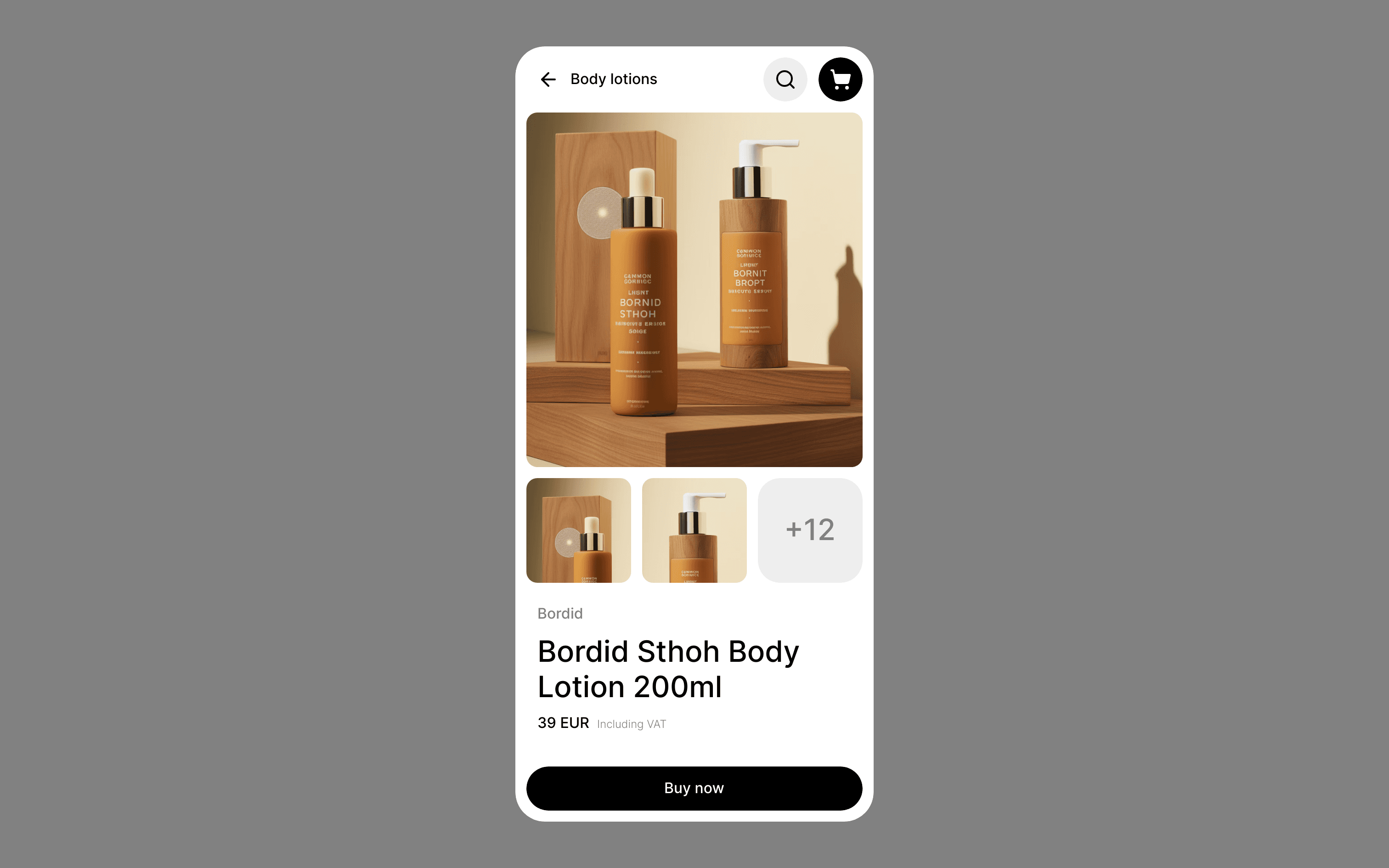
UX Planet — Medium | Tosh Anand  Yes, we make the Roomba and other awesome robots.
Yes, we make the Roomba and other awesome robots.
User Experience + Industrial Design is one team at iRobot. For a consumer product lineup like iRobot’s, this made complete sense. And it’s not much different from what Experience Designers do: collecting exemplars, Color-Material-Finish studies with participants (like concept testing), and exploring around 20+ concepts for one design problem, etc.
While NDA prohibits me from sharing details about what I worked on, I’m sharing my top learnings that surfaced in practice at the internship. Its roots are in my graduate program in HCI at Indiana University, a few clichéd design books, and High Resolution Podcast.

Hope the next set of iRobot design interns or anyone starting out in the industry find this useful.
Mockups are not just for exploring proof of concepts but are also tools for thinking through design problems. When certain ideas seem like dead-ends, mockups can spark insights that surface turnarounds and open avenues for further exploration. They serve as springboards for conversation and help to materialize abstract thoughts so that they can be further refined and clarified.
For example, a new feature suggestion for the iRobot Home App was simple in theory but, challenging to design given the diverse capability of the product lineup. Feeling stuck after a few rounds of sketching, I mocked up the ideas with the highest potential. As messy pencil drawings transformed into familiar Balsamiq components, elements had room to breathe and thoughts began to form shape. The resulting mockup sparked an insightful discussion with my manager leading to solid design direction.

Multiple mockup options when lined up against each other inherently bring a decision-making framework based on scalability, discoverability, learning curve etc.
Prototypes or just click-through mockups are great for communicating design decisions. As a basic tenant of design, this is surprisingly difficult to put into practice. I wanted to get better at this during my internship, so I persistently incorporated prototypes into every design conversation.
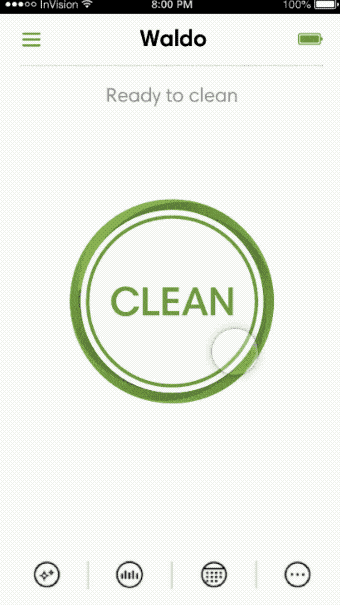
Any chance I had, I presented my fellow designers, engineers, users, PMs, whomever I could find with something concrete and tangible just to put something on the table. I used it to communicate design decisions, to be a listener, to get feedback, and to ask better questions.
While open-ended questions lead to interesting conversations with nuggets of insight, a refined or direct question brings up the good stuff soon.
Over the summer, if a response to my question sounded too open-ended, I let the person complete, acknowledge their response, and followed up with the iterated question.
For example, asking ‘Why are we doing this?’ to a Principal designer led to an insightful conversation about their take on design philosophy at iRobot. I iterated the question by asking ‘What are our short term and long term goals for the redesign?’ and the response was closer to what I initially intended. In all, I got the best of both worlds.
Whenever I sensed feedback on my design work losing its crispness, I prefaced & ended presentations with context, and the kind of feedback I was looking for. The small but, important change boosted the feedback influx that was most useful to me.
High Resolution Podcast is one of the finest design resource available today. Imagine them as guest lectures from 25 masters of design at your University. My favorite episodes include Andréa Mallard, Kate Aronowitz, John Maeda, Maria Giudice, Tom Kelley, Jared M. Spool, Gentry Underwood and Daniel Burka.
My top lesson from Daniel’s episode came in really handy at work. Here’s a paraphrased version of what he said:
“How little of design is done in Sketch or code, and how much of design is done by figuring out relationships within your company and understanding the core business…understanding what motivations for other people in your business are, and if your design doesn’t speak to those priorities, you’re going to end up doing a lot of dead-end design work.
All that other leg-work IS design, and if you’re not doing that, you’re only a 1/3 designer.”
-Daniel Burka, GV
It’s common knowledge to rationalize the proposed design and document decisions as the concept evolves. And the case for why other concepts do not work is equally important as the case for why the proposed concepts are ideal. The exploratory concepts that didn’t make the cut need not be fleshed out, but need to be documented. It shows you did the work, makes a stronger case, and most importantly, you won’t end up going in circles.
For example, after sharing a concept for robot’s automatic cleaning Scheduler, feedback from the design team hinted at exploring alternatives that sounded more plausible for the design problem at hand. Later, I hit deja-vu. I knew those directions were not going to work for reasons including scalability, consistency, etc. Lesson: document, so you remember (unless you’re working on nothing else or you’re a superhuman)
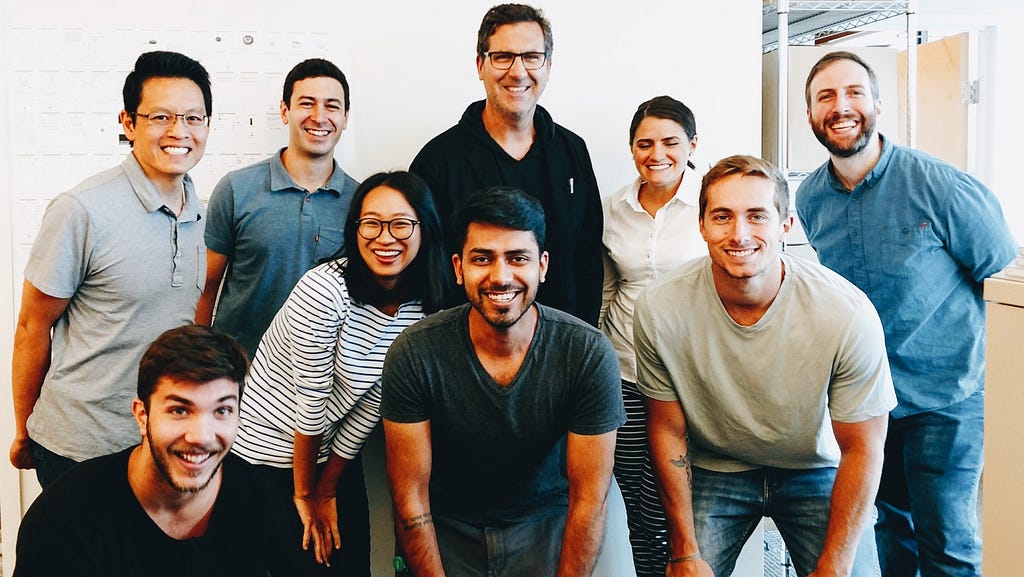 Industrial and User Experience Design team behind the past, present and the future of home robots. (I’m the one in center)
Industrial and User Experience Design team behind the past, present and the future of home robots. (I’m the one in center)
I learned from my manager Ben Schriesheim, Principal Designer how to talk Design to non-designers. I learned from Rick Hoobler, Director of UX, how to look at Design with a business lens. I learned from Kristin Moreisee, UX Designer if you don’t manage your time well, you’ll spend the entire day in meetings. I learned from Cory White, Principal Designer that when you’re unsure of what to do, just prototype and test it. I learned from Adam Goss, Principal Designer that Design is not what a survey result points towards but, finding those latent needs that come with a deep understanding of your users. I learned from Wes Johnson, Principal Designer that solving a design problem for a wide variety of users takes time but is possible. I learned from Stuart Jang, Insun Hong, Jeff Burrell, Yanhan Li and Julia Ainbinder that Industrial Design IS Experience Design. Thanks guys for giving me my best work experience.
My favorite part about the summer was the in-home study. There’s nothing better than watching people react/try to use/fail to use your design…
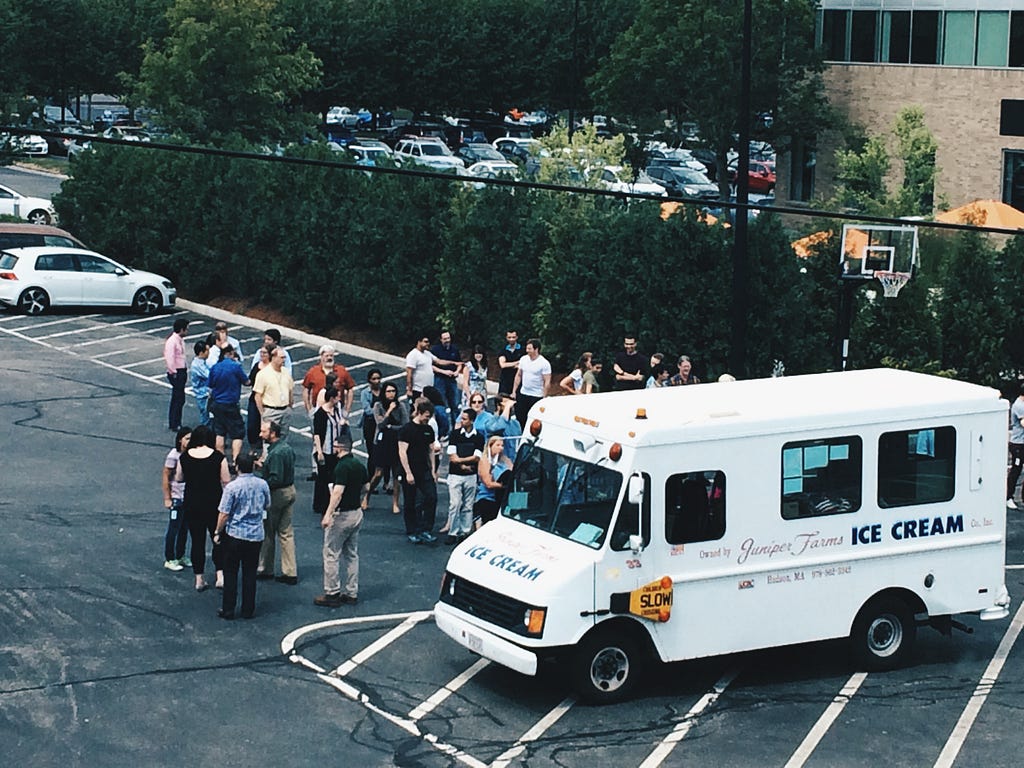 That one time we had the ice cream truck on grounds. Actually, it was every other week
That one time we had the ice cream truck on grounds. Actually, it was every other week That one time Jeff had extra protein (spider) in his salad
That one time Jeff had extra protein (spider) in his salad That one time we had the best meat sandwiches in town
That one time we had the best meat sandwiches in town My roommate loved me even more when I brought these bad boys home.
My roommate loved me even more when I brought these bad boys home.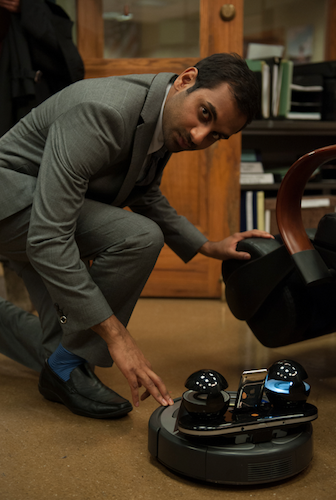 Don’t forget to sign the petition on change.org to make DJ Roomba a thing.
Don’t forget to sign the petition on change.org to make DJ Roomba a thing.
Thanks to Trisha Z for helping me formulate my thoughts.
Check out my Portfolio:
Designing the experience for Roomba and other home robots. was originally published in UX Planet on Medium, where people are continuing the conversation by highlighting and responding to this story.
AI-driven updates, curated by humans and hand-edited for the Prototypr community